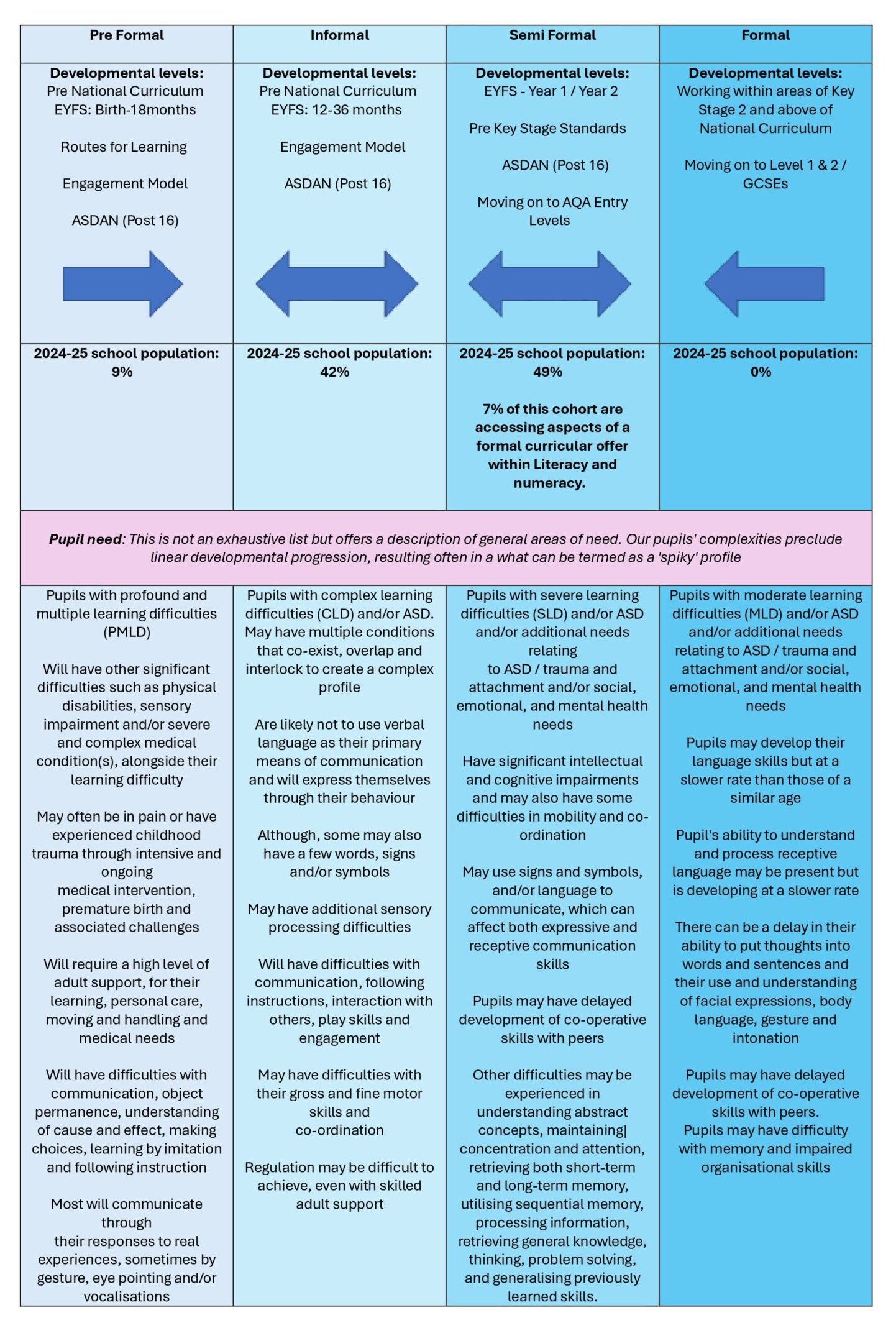We know that our pupils have individual, varied and complex needs, however, in order to structure a rich curricular offer, to provide all pupils with experiences that are relevant, interesting and challenging, we have adopted a curriculum structure which has four pathways: pre-formal, informal, semi-formal and formal.
The pathways are not defined by age, but by learning needs and attainment. Each pathway covers the understanding, skills and knowledge across a range of curricular areas (the school’s subjects). Pupils are able to move flexibly between pathways at any point during their time at school. Individual learning needs are further met through interventions and each child’s curricular offer is structured through the IEP.
Whilst there are whole school ‘topics’ and curriculum areas, the planning, learning and delivery will differ between classes to meet individual needs. Priorities based on IEP targets, EHCP outcomes, age, need, motivation and learning style all help to build each pupil’s individual curricular offer.
Early Years pupils will join a primary class that is appropriate to their learning need. Baseline assessments are carried out in order to find out which curriculum pathway is best suited to their need.
For pupils at Post 16, whilst learning continues to be driven by IEP targets, the programme of study covers core skills, life after Ash Lea, and personal, social enrichment. There is a greater focus at this stage on supporting pupils and their families to plan and prepare for life after school.

